- Home
- Troy Denning
Silent Storm: A Master Chief Story Page 14
Silent Storm: A Master Chief Story Read online
Page 14
His faceplate was just centimeters from the top, and his shoulders were pressed tight to the sides. John couldn’t see his feet—he was resting on the fission reactor that sat behind his shoulder blades, and the thruster pack mounted beneath it would be the first thing to hit anything sticking above the surface of the ice.
No good.
“John,” Fred said. The motion tracker on John’s HUD showed Fred standing at the loading breech, no doubt looking up the tube at the top of John’s helmet. “What the hell are you doing?”
“Not sure yet.”
John pushed himself back into the opening, then sat up, swung his legs around, and lay on his belly with his arms at his sides. Now he felt steady and he could see where he was going but if he hit anything, it would be with his head instead of his feet. Even worse, his hands would be pinned to his sides as soon as he entered the tube—a very bad way to join battle. He raised himself up, took his assault rifle off its mount, and placed it on the ice in front of him. He then realized he wouldn’t be able to reach his equipment pouches either, and grabbed a coil of thermite-carbon cord.
He lay on his belly again, this time with his arms stretched in front of him, holding his assault rifle in one hand and the coil in the other.
“Yeah,” he said. “This’ll work.”
“How?” Kelly asked. “All you can do is wriggle your butt and curl your toes. It’ll take a year to crawl to the top that way.”
“I didn’t say anything about crawling,” John said. “We’re going to slide.”
“Uphill?” Fred paused an instant, then pulled the I-JeT tank-pack off the magnetic mounts on his back and stepped over to the loading breech. “Ah. I’d have thought of that sooner or later.”
“Thought of what?” Johnson asked.
“Come on, Sarge,” Kelly said. She removed the SPNKR rocket launcher and extra barrels from the weapon mounts on the back of her armor. “You want to hang with Spartans, you gotta pay attention.”
Johnson faced her for a moment, then finally seemed to realize how Blue Team intended to ascend the tube. He turned to John.
“Uhh . . . just take it easy. No need to play human cannonball.” He looked at Fred. “And maintain your spacing. The last thing you need is a thruster jet igniting that tank-pack.”
“Thanks for the reminder, Sarge,” Fred said. “I’ve only had a thousand hours of demolitions training, so it probably wouldn’t occur to me to avoid exposing combustible gas to open flame.”
“We all get careless, son.” Johnson’s tone was wary, as though he could not quite decide whether to take Fred earnestly or berate him for being sarcastic. “You’d be smart to remember that, if you want to make it to my age.”
“I’ll remember, Staff Sergeant,” Fred said. “Getting old and preachy is certainly better than the alternative.”
“Damn right,” Johnson said. He started back toward the gantry crane. “Get it done, Blue Team.”
As soon as Johnson was gone, John began to issue orders.
“Linda, you’re our observer and sniper cover. I know that MA5B you’re stuck with is no Series 99, but do the best you can for as long as you can.”
Inside John’s helmet, Linda’s status light winked green.
“Fred, you follow me, pushing the I-JeT in front,” John continued. “If we hit a tight spot, I may need you to pass the nozzle up. Kelly, you bring up the rear with your SPNKR, extra barrels, and plenty of thermite-carbon cord in front. I don’t want to engage from inside the tube—”
“Because that would be crazy,” Kelly said.
“Right,” John said. “But the choice may not be ours.”
Fred and Kelly’s status lights blinked green. John activated his exterior lamp and cringed at the cramped gullet ahead. Barely a meter high in the center, its frost-coated walls curved down to an icy bed studded with fist-size bumps. At the end of the beam, where the light dimmed into darkness, he could see a curtain of ice dangling halfway down into the passageway.
It was going to be a rough ride.
“See you at the top, everyone.”
John had barely spoken before the Mjolnir’s onboard computer sensed his intention and began to pulse his thruster jets. He accelerated slowly but steadily, his shoulders scraping along the walls and his helmet banging against the ceiling as he bounced over one bump after another.
The ice curtain grew more distinct as he drew close, and he fired a couple of rifle rounds to test its strength. The curtain shattered, and a sparkling cloud of frost crystals filled the tube.
“Blue Two beginning run,” Fred said over TEAMCOM. “I have Blue Leader on motion tracker, maintaining twenty-meter separation.”
“Affirmative.” John passed through the cloud of frost crystals, and another ice curtain appeared in the dimness at the end of his lamp beam. “How’s your visibility?”
“Zero,” Fred replied. “You’re leaving a fog bank in your wake.”
“I was afraid of that.” Between his thruster jets and the friction of his scraping armor, John was creating a lot of heat in the passage. In Seoba’s trace atmosphere, that would turn ice directly into vapor. “I’ll alert you to any obstacles I encounter.”
Fred’s status light winked green.
“Be advised, you’re also having an effect outside the accelerator tube,” Linda said. “As you advance, I see little ice plumes rising off the exterior.”
Probably knocked loose by his shoulders and helmet banging against the walls. John bit back a curse, then asked, “How noticeable?”
“Very,” Linda replied. “If you see the tube, you see the plumes. But it’s hard to know what the enemy can see. Alpha Company has initiated the diversionary attack, and the whole mountainside is blanketed in fog.”
“Acknowledged,” John said. “Keep us updated.”
“Then we’re continuing as planned?” Kelly asked.
“Give me a second.”
Anyone inside the accelerator tube was as good as dead if the enemy brought their heavy weapons to bear. But Blue Team was still the company’s only hope of demolishing the insurrectionist comm center, and John was probably halfway across the flat part of the run already. Once the tube started its uphill climb, in fifty meters, there would be a lot less ice inside. That would give him the room he needed to stop banging the walls. Besides, it would take John longer to turn back now.
He really had only one option left—go forward, and go faster.
“Blue Leader?” Kelly asked. “I’m ready to—”
“Negative,” John said. “I’m already committed, but there’s no reason to risk anyone else. You and Fred extract—”
“Fat chance,” Kelly said. “Blue Three beginning run.”
“Kelly—”
“Too late,” Fred said. “Keep moving.”
John instructed the onboard computer to pulse his thruster jets longer and more frequently. He shot forward and crashed through a second curtain of ice, his Mjolnir bouncing along so ferociously that he feared the system might activate the armor’s protective lockdown system. He knew that outside in the dockyards, the rest of Alpha Company was arrayed along the basin perimeter, launching volley after volley of rockets and grenades. Where a reasonably safe opportunity existed, fire teams would be leapfrogging up the mountain, trying to make the attack appear sincere.
It was all just for show. Alpha Company would continue the barrage as long as they still had rockets and grenades, but with the enemy holding the high ground on three sides, the terrain was simply too unfavorable for the attack to have a realistic chance of stopping the Civets from reaching the damaged comm center.
If the insurrectionist commander was inexperienced and poorly trained, it would probably take ten minutes to realize the attack was a feint, and about ten more to guess the enemy’s plan and bring some heavy weapons to bear on the accelerator tube. By then, Blue Team would already be on the mountain and planting charges around the comm center.
But if the insurrectionist comma
nder was a good one—or if someone had reported the ice plumes rising off the lower part of the accelerator tube—then the rebels would already know what the Spartans were doing. The heavy weapons units would be moving into attack position, and John, Fred, and Kelly would be dead in about sixty seconds.
A bad way to end a friendship.
John crashed through a third ice curtain and saw the next one appear in the dimness ahead. Given their regular spacing, he assumed they formed beneath the electromagnetic rings that had once been used to pull ice capsules through the accelerator tube, but this one did not seem quite as pale or translucent as the others. In fact, as he continued to accelerate toward it, he realized that the dark parabola at its base was not the same kind of opening that he had seen at the bottom of the others.
It was a seam, where the ice bed met the frost-covered floor of the accelerator tube. And the only way that could happen was if the tube was running up an incline.
John tried to slow down and adjust his vector, but by the time the onboard computer responded and flipped the thruster nozzles around, he was already entering the transition. He managed to raise his arms and chin quickly enough to keep his weapons and head from striking first, then slammed his chest into the slope and ricocheted into the ceiling.
Linda’s voice came over TEAMCOM. “John, I hope that was you.”
“Yeah.” John hit the tube floor again and bounced back toward the ceiling. “Blue Two, watch—”
“No kid-ding!”
“Be more careful,” Linda said. “You’re launching ice clouds ten meters high.”
“Yes, ma’am.”
John had finally decelerated enough to bring himself under control and was continuing up the passage. As he had hoped, this part of the accelerator tube had far less ice. There was a full meter between his back and the overhead, and about the same distance between his chest and the small ribbon of ice running along the floor. His thruster nozzles were angled slightly downward to help keep Seoba’s weak gravity from pulling him down, but every ten meters or so, he still had to drop a leg and kick off to keep from sinking to the belly of the tube.
“Any hostiles moving into attack position?” he asked.
“None that I see,” Linda said. “But I don’t see much. The mountainside is all fog.”
“The barrage still going on?”
“Slowing down,” Linda said. “I think they’re running out of grenades.”
“Okay. Tell us more when you have it.”
“Affirmative,” Linda said. “I am moving up-slope now.”
“No high-risk maneuvers,” John said. “That’s an order.”
“How funny, coming from you,” Linda said. “But acknowledged. I will do my very best to avoid getting killed.”
The tube ahead suddenly filled with fog and crystals. He slowed at once and let himself drop to the floor, then used his thrusters to hold his position. He checked his chronometer and saw he had been in the tube for eight minutes—enough time to put him roughly two-thirds of the way up the mountain, at about the same elevation as the Civet convoy.
Recalling the heavy weapons mounted in the cargo beds of some of the vehicles, he shut off his lamp and continued to stare into the ice fog. It took only a few seconds to spot dozens of ivory-colored rays shining through the line of bullet holes that had been punched through the wall of the accelerator tube.
John looked to the opposite wall and saw a like number of rays beaming through a similar line of holes where the rounds had exited the tube. So, not small arms—probably a vehicle-mounted anti-aircraft gun similar to the ones that had shredded the Black Daggers during the initial deployment.
The motion tracker showed Fred approaching, with Kelly about twenty meters behind him. John switched his helmet lamp on again, then shined it down the passage so his location would be obvious even in the fog.
“Hold up,” he said. “We have a Vulcan chewing up the tube just ahead.”
Fred decelerated and dropped to a knee next to John, then watched as a new line of ivory-colored rays began to illuminate the fog near the belly of the tube.
“Good news is, they don’t know where we are,” Fred said.
“Bad news is, we’ve got to go through there,” Kelly said, dropping in on John’s other side. “Time to break out the SPNKR?”
John thought for a moment, then made a slicing sign with his hand. “Negative. That’s what they’re waiting for.”
“How can you tell?” Fred asked.
“That’s denial fire,” John said. “They don’t know where we are—they’re just trying to keep us from advancing beyond there.”
“And doing a fine job,” Kelly said. “This new Mjolnir is good stuff, but even a titanium-alloy outer shell can’t stop a twelve-seven depleted uranium round—much less a dozen of them.”
“Which is why they’re expecting us to attack the Vulcan,” John said. “And the instant we open a firing hole for ourselves, they’ll know exactly where we are—and hit us with the missile launcher that took out the Ghost Star.”
“Okay, so how do we get past the Vulcan without taking it out?” Fred asked.
“That’s the easy part,” Kelly said. “Look at that fire pattern. They’ve got an amateur behind the triggers.”
John looked forward again and saw that the third line of bullet holes was being drilled along the top of the tube.
“Exactly.” He took his coil of thermite-carbon cord and outlined a ten-by-twenty-centimeter rectangle low on the tube wall. “He’s predictable. When he goes back the other way—”
“We follow him,” Fred said. He pointed at the thermite rectangle. “Is that what I think it is?”
“It is if you think that’s where you’re leaving the I-JeT.”
“The convincer.” Fred leaned the tank-pack against the rectangle and laid the nozzle atop it. “How much of a delay do you want for the thermite?”
John looked up the accelerator tube. They were still four or five minutes from the top, but he doubted the insurrectionists would wait that long before deciding their trick hadn’t worked and start trying something else.
“Give it thirty seconds,” John said. “That should give us enough time to clear.”
“If you say so,” Fred warily replied.
Fred prepared the fuse and clipped it to the thermite cord. John waited until a new line of holes began to appear in the wall, this time about two-thirds of the way down, then pushed off and hit his thrusters. He shot up the passage just a meter above the bullets zipping silently past, with Kelly and Fred close behind him.
Once they were safely past the danger zone, Fred said, “Thirty seconds from . . . now.”
They continued up the tube in staggered formation, occasionally dropping a leg to kick off the floor and keep themselves aloft. Thirty seconds passed, and John glanced back down the tube. The ice fog was so thick he couldn’t even see the flare of the thermite burn.
Nothing happened.
He wasn’t sure what he had expected. They were already two hundred meters from the decoy site, but it seemed like the flash of a missile strike should have been visible through even that much fog. Maybe the insurrectionists had missed the thermite burn and didn’t realize a firing port had suddenly opened in the wall of the accelerator tube. Or maybe John had been completely wrong about their plan. That was one of the hazards of spending time with Dr. Halsey—you started to overthink things.
John gave up wondering and focused on getting to the top of the accelerator tube. The end was perhaps fifteen hundred meters ahead, a bright speck the size of a pinhead. Had it not been glowing pink with light reflected from Biko’s atmosphere, it would have been indiscernible.
Then the speck vanished behind a veil of swirling ice crystals.
It took John a moment to realize what he was seeing—that the frost had suddenly leapt off the walls and was now obscuring the view ahead. There had been no boom or shockwave, because Seoba’s atmosphere was too thin to carry sound or kinetic ener
gy. But the accelerator tube itself had just shuddered beneath a tremendous impact, and when John glanced back to where they had left the I-JeT and its tank-pack, he saw a bright ball of orange flame floating in the fog.
So he had been right about the insurrectionist plan after all. They were just a little slow.
Linda’s alarmed voice came over TEAMCOM. “Status Blue?”
“All fine,” John said. “The detonation was part of the plan. Just a decoy.”
“Glad to hear it.” Linda’s tone remained wary. “But continue with caution. Something strange is happening up there on the mountain.”
“Strange how?”
“It is hard to see through this fog,” Linda said. “But there are many explosions on the mountain near your decoy detonation. From my position, it looks like the whole slope is catching fire.”
“Acknowledged,” John said. “What is your position?”
“Under the accelerator tube, seven hundred meters above the dockyards.” Linda paused, then added, “I am trying to move higher, but progress is slow. The path requires a lot of sweeping.”
By sweeping, John knew, Linda meant sniffing out and killing enemy soldiers. As a sniper working alone, she would not want to risk leaving a mobile foe behind her.
“Understood,” John said. “Hold position until we figure out what’s going on here.”
Once Linda had acknowledged the order, John and his companions damped their thrusters and dropped to the belly of the accelerator tube.
“Thoughts?” John asked.
“We started something with that I-JeT detonation,” Kelly said. “Something the innies weren’t expecting.”

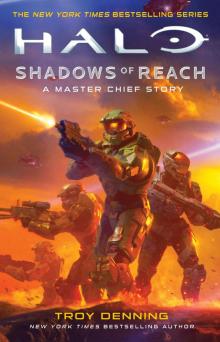 Shadows of Reach: A Master Chief Story
Shadows of Reach: A Master Chief Story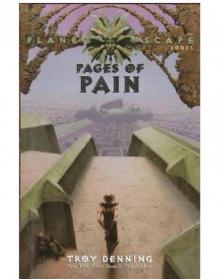 Pages of Pain p-1
Pages of Pain p-1 Star Wars 396 - The Dark Nest Trilogy III - The Swarm War
Star Wars 396 - The Dark Nest Trilogy III - The Swarm War Star Wars: Fate of the Jedi: Apocalypse
Star Wars: Fate of the Jedi: Apocalypse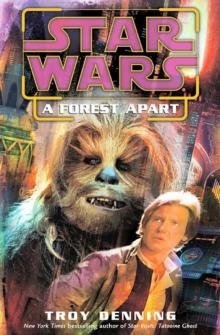 A Forest Apart
A Forest Apart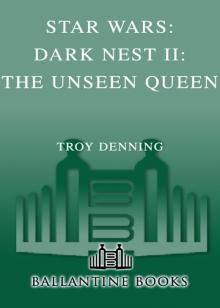 Star Wars: Dark Nest II: The Unseen Queen
Star Wars: Dark Nest II: The Unseen Queen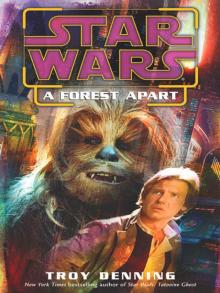 Star Wars: A Forest Apart
Star Wars: A Forest Apart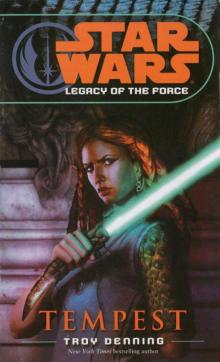 Tempest: Star Wars (Legacy of the Force) (Star Wars: Legacy of the Force)
Tempest: Star Wars (Legacy of the Force) (Star Wars: Legacy of the Force) Star by Star
Star by Star Crucible: Star Wars
Crucible: Star Wars Last Light
Last Light Invincible
Invincible Inferno
Inferno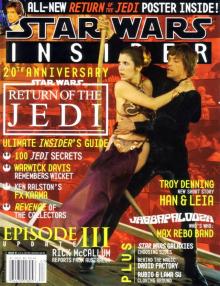 Star Wars - The Trouble With Squibs
Star Wars - The Trouble With Squibs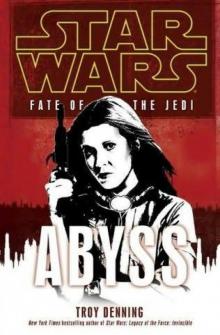 Abyss
Abyss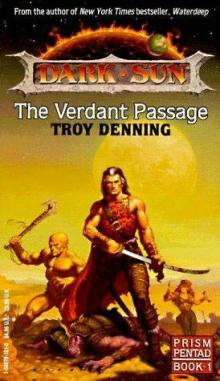 The Verdent Passage
The Verdent Passage Vortex: Star Wars (Fate of the Jedi) (Star Wars: Fate of the Jedi)
Vortex: Star Wars (Fate of the Jedi) (Star Wars: Fate of the Jedi) Dragonwall e-2
Dragonwall e-2 The Amber Enchantress
The Amber Enchantress Crucible
Crucible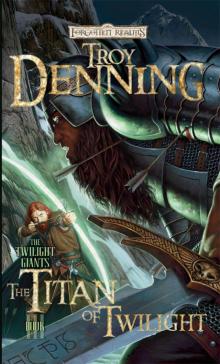 The Titan of Twilight
The Titan of Twilight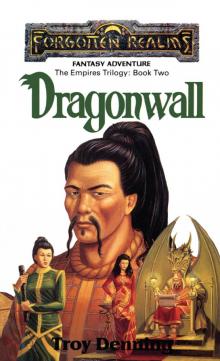 Dragonwall
Dragonwall Beyond the High Road c-2
Beyond the High Road c-2 The Siege rota-2
The Siege rota-2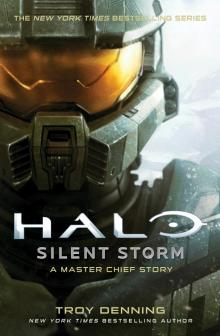 Silent Storm: A Master Chief Story
Silent Storm: A Master Chief Story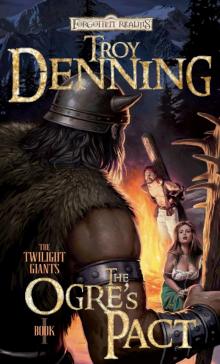 The Ogre's Pact
The Ogre's Pact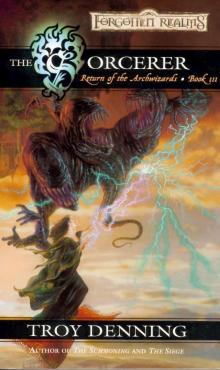 The Sorcerer rota-3
The Sorcerer rota-3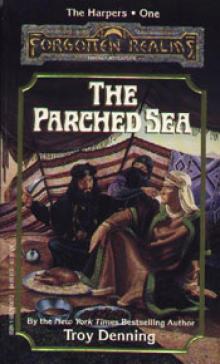 The Parched sea h-1
The Parched sea h-1 The Giant Among Us
The Giant Among Us Recovery
Recovery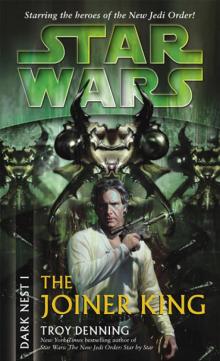 Star Wars: Dark Nest 1: The Joiner King
Star Wars: Dark Nest 1: The Joiner King Faces of Deception le-2
Faces of Deception le-2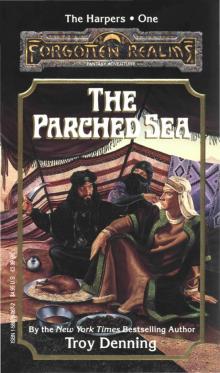 The Parched Sea
The Parched Sea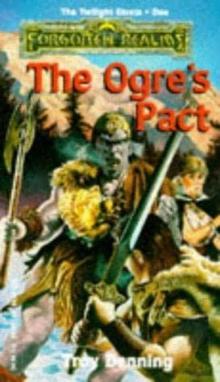 The Ogre's Pact зк-1
The Ogre's Pact зк-1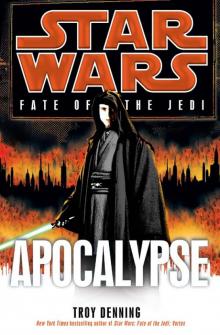 Apocalypse
Apocalypse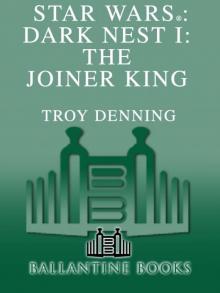 Star Wars®: Dark Nest I: The Joiner King
Star Wars®: Dark Nest I: The Joiner King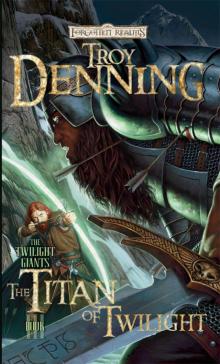 The Titan of Twilight ttg-3
The Titan of Twilight ttg-3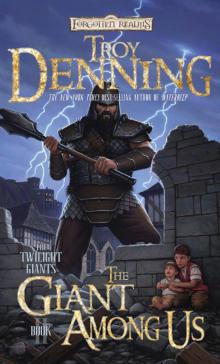 The Giant Among Us ttg-2
The Giant Among Us ttg-2 The Summoning rota-1
The Summoning rota-1 Tatooine Ghost
Tatooine Ghost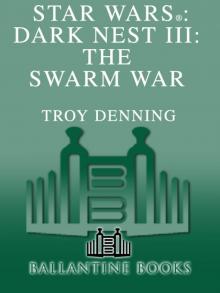 Star Wars®: Dark Nest III: The Swarm War
Star Wars®: Dark Nest III: The Swarm War Retribution
Retribution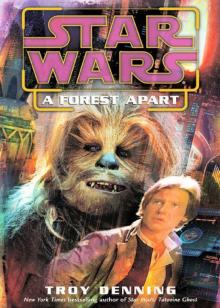 A Forest Apart: Star Wars (Short Story)
A Forest Apart: Star Wars (Short Story)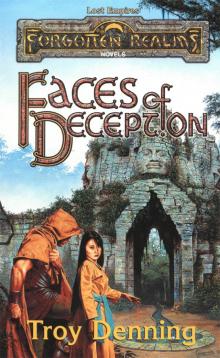 Faces of Deception
Faces of Deception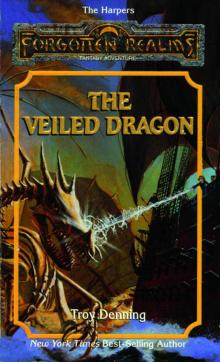 The Veiled Dragon h-12
The Veiled Dragon h-12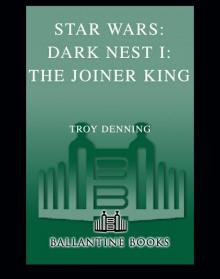 Star Wars 390 - The Dark Nest Trilogy I - The Joiner King
Star Wars 390 - The Dark Nest Trilogy I - The Joiner King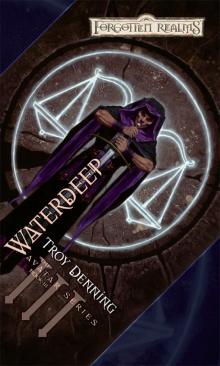 Waterdeep
Waterdeep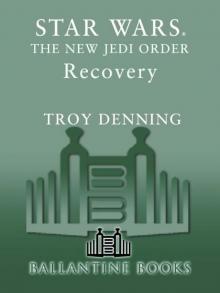 STAR WARS: NEW JEDI ORDER: RECOVERY
STAR WARS: NEW JEDI ORDER: RECOVERY